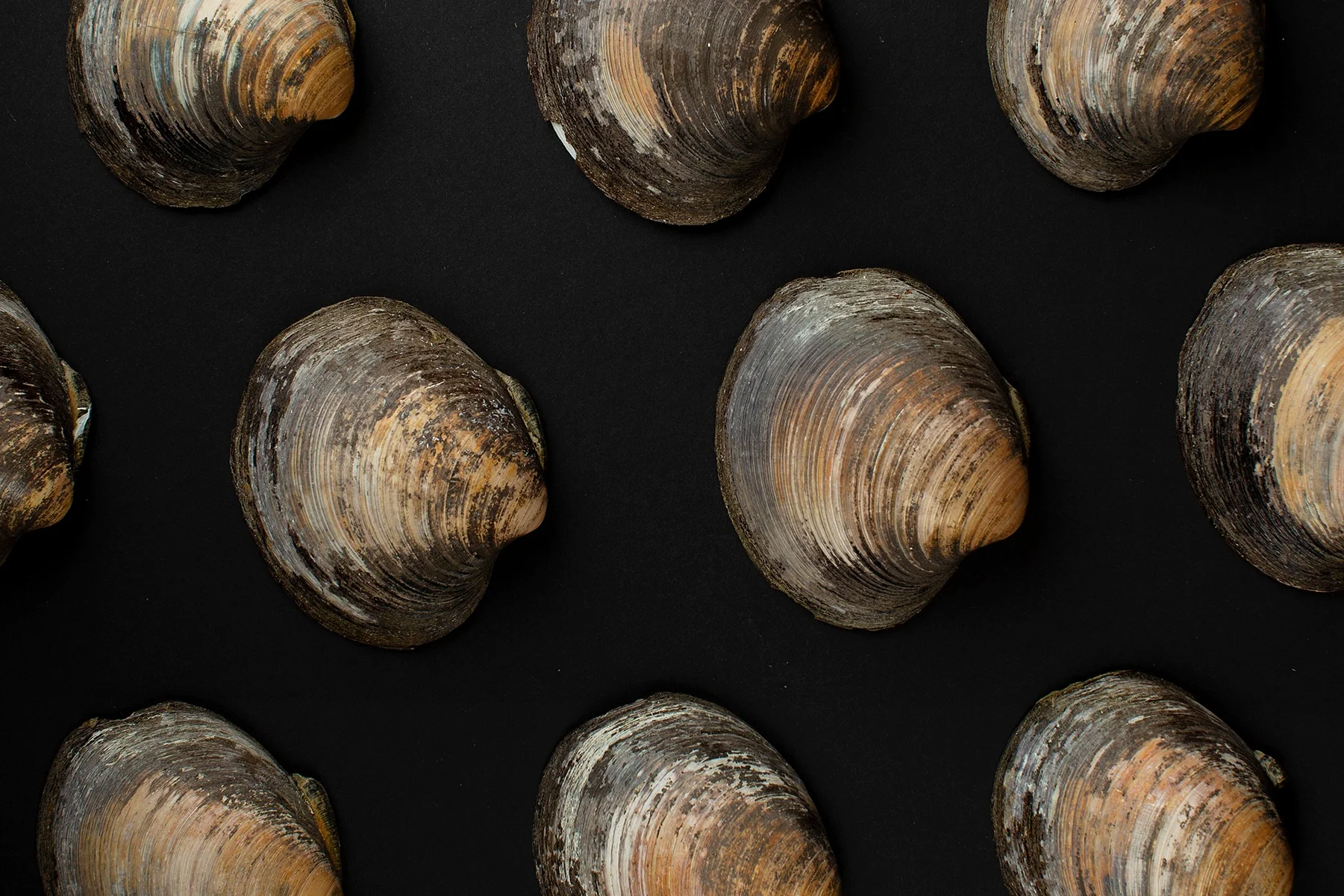What is Sclerochronology?
Sclerochronology: the use of long-lived annually-banded bivalve molluscs for detailed study of past environments
Marine biogenic carbonates are natural archives of palaeoenvironmental information, and can provide high-resolution proxy records of past and present ocean climate variability. We use growth increment data (sclerochronology) and geochemical information (sclerochemistry) from molluscs and other biogenic carbonates to study modern and ancient ocean environments. In particular, we use the long-lived marine bivalve Arctica islandica (Linnaeus, 1767) (ocean quahog or mahogany clam) to study ocean circulation and seawater temperature in the North Atlantic region during the Holocene. A. islandica is a large (up to 120mm length) clam commonly found at 10 - 150m water depths along the continental shelves of the temperate and boreal North Atlantic. Its most important distinguishing characteristic is its remarkable longevity. For example, one specimen of A. islandica, collected from the North Icelandic Shelf, was found to have lived for 507 years, making it the longest-lived non-colonial animal whose age has been precisely verified (Butler et al 2013). It is possible to determine the ages of these specimens by counting the prominent annual increments deposited in the shell, and it is these increments that are the key to the palaeoenvironmental potential of A. islandica.
Crucially, shell growth (determined by measuring increments) is synchronous within and between populations, indicating the expression of a common environmental signal in the shell growth response and enabling A. islandica to be used as a high-resolution proxy archive in the climatically important North Atlantic region. It is possible to use the technique of crossdating (derived from tree-ring research) to ascribe absolute dates to fossil shell material and then to construct master shell chronologies using a mean value function of crossdated growth series (Butler et al., 2009a, 2009b, 2013). The longest published master shell chronologies were developed, using live caught and fossil A. islandica shells, by scientists in the Exeter sclerochronology and scleroclimatology group when they were based at School of Ocean Sciences at Bangor University. For sites in the Irish Sea off the west coast of the Isle of Man, Butler et al (2009, 2010) built a 487-year chronology, and more recently a 1,357-year archive has been developed for a site off the island of Grimsey on the North Icelandic Shelf (Butler et al, 2013). This chronology is illustrated in the plot below.
We are currently using shell growth patterns and geochemical data from the shells to study ocean circulation and seawater temperature variability in North Atlantic waters. The master chronologies can be compared with records from nearby instrumental stations to determine the extent to which shell growth is responding to environmental variables such as temperature and food supply. Depending on the strength of the response, it may then be possible, using statistical calibration and verification techniques, to reconstruct environmental conditions before the start of instrumental records.
Scleroclimatology
Our research into scleroclimatology has led to the first multi-centennial absolutely-dated records of seawater temperature change from the mid-latitude North Atlantic. These invaluable records allow direct correlation with tree-ring and ice core records of Northern Hemisphere climate change over the last millennium. As a result we have become involved in some large collaborative efforts that attempt to understand the relative significance of external forcing (solar, volcanic) and internal variability, and modes of climate variability (North Atlantic Oscillation/Atlantic Multidecadal Oscillation), in the coupled ocean-atmosphere system over the last 1000 years. This is resulting in increasingly close collaboration with climate modelling groups.














